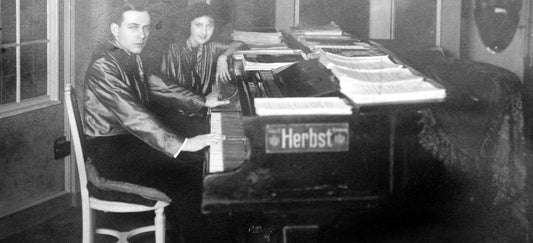When Conny Burian talks about her new book, "Knights of the Dark Sun," it's immediately clear that for her, the Middle Ages are not a silent age of castles, swords, and pious piety, but a space full of open questions, daring hypotheses, and mysterious voids. She plays with these uncertainties when she tells the story of Hilde, a rebellious woman of low birth. In it, Hilde fights not only against a mysterious secret society, but also against the stereotypes we have of the Middle Ages today.
The "Parzival" as a starting point

A starting point for Burian's thoughts is the famous Grail novel "Parzival" by Wolfram von Eschenbach. Hardly any work of medieval literature has posed as many mysteries as this verse novel about the seeker of the Holy Grail. To this day, almost nothing is known about Wolfram's life, his sources, and his intentions. Was there really the mysterious Provençal poet Kyot, whom Wolfram named as his informant? Why did the Grail transform from a holy chalice into a mysterious stone in his work? And where did his allusions to the Nibelungenlied come from? Burian takes up such questions, but gives them a fantastical twist: In "Knight of the Dark Sun," she plays with the idea that Wolfram was taught as a child by none other than Hilde.
The protagonist Hilde
This Hilde had already been working with a terminally ill poet during the writing of the Nibelungenlied. When Wolfram is kidnapped by an occult brotherhood because they suspect he holds the key to the Grail, Hilde embarks on a dangerous quest. What follows is a journey through a medieval world deliberately full of anachronisms—such as allusions to the National Socialist Grail ideology surrounding Himmler's Wewelsburg Castle with its sun wheel. The author thus aims to place Wolfram in a position impossible for the historical poet: At Hilde's side, he can resist those who would later misuse the Grail myth, and in doing so, gain inspiration for his later major work.
But how did Burian actually come up with the character Hilde? It began with an almost overlooked hypothesis: that the Nibelungenlied might have been committed to parchment by a nun from Passau. This idea ignited her imagination. She began to picture the life of a woman entangled in the writing process of such a monumental work – and who inadvertently also touched other cultural highlights of her era. From this projection grew a figure that took on a life of its own. Hilde became the "Forrest Gump of medieval cultural history," as Burian tongue-in-cheek puts it: a woman who appears almost by chance, but with all the greater impact, at crucial junctures in literary history, clashes with emperors, and inconspicuously weaves traces into tradition.
This character in particular also raises a fundamental question: What role could women actually play in the Middle Ages? Burian contradicts the common image of an era in which they had no say. She points out that Kriemhild, in the 23rd adventure of the Nibelungenlied, already reflects on how much freer she would be as a knight – a surprisingly modern consideration. Even in the High Middle Ages, there were influential women, such as Eleanor of Aquitaine and Hildegard of Bingen, who either exercised secular power or achieved religious authority. While their lives were extraordinary, they demonstrate that the position of women was contested and that courtly literature itself was part of this debate. Burian takes seriously the criticism of violence against women in texts such as Parzival and the Nibelungenlied. For her, Hilde's literary adventure is also a continuation of these debates: What opportunities would a woman have had back then if she had actually been knighted – as Kriemhild dreamed of?
A novel "between genres"

Thus, "Knight of the Dark Sun" also oscillates between genres. Is it a historical novel or fantasy? Burian deliberately avoids committing to one genre. The world in which Hilde lives contains many accurately depicted details of medieval everyday life, but is also permeated by elements that defy any rational explanation.
Burian avoids resorting to artificially archaic language; instead, she gives her protagonist a modern voice. She describes it herself as follows: People in the Middle Ages loved, suffered, and hoped like we do – but they articulated it differently, and much of it has faded away over the centuries. Her novel is therefore not an archaeological reconstruction, but a mirror in which medieval experiences are intertwined with contemporary perspectives.
New medieval novels in sight
And what's next for Hilde? Burian already reveals that a third volume is in the works. It takes the heroine, her companion Sir Gerald, her friend Nilu, and her fiancé Lancidant to England. At the court of King Henry and Eleanor of Aquitaine, they encounter the mysterious poet Marie de France—and become entangled in a deadly power struggle. So it remains: Hilde's path through the cultural history of the Middle Ages leads from one dangerous adventure to the next, always on the threshold between history and fiction, between traditional myths and newly invented stories.
The book "Knights of the Dark Sun" is available in German language in bookstores and from our publishing house, as a printed book (ISBN 978-3-910347-66-3) and as an EPUB (ISBN: 978-3-910347-69-4).
Blog article published in English in October 2025. Machine translated from German.




